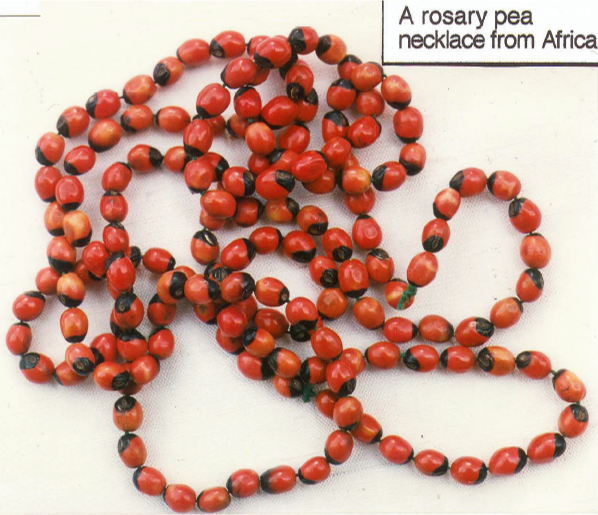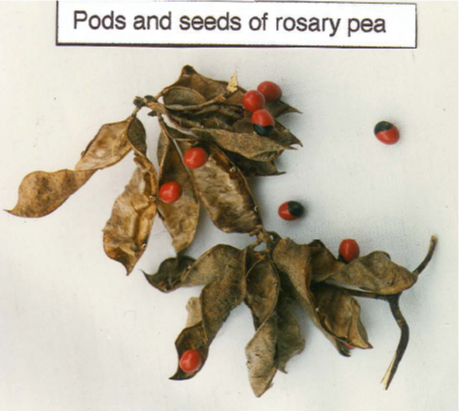

It was for personal adornment that man carried this plant around the world. Dutch traders brought quantities of the seeds of Abrus precatorius to Europe and America in the sixteenth century to be used as beads. Women in Holland made chains of the seeds, sometimes with pearls, to wear as necklaces.3
This woody vine is native to the tropics and probably originated in southeast Asia. It is now widely naturalized throughout the tropics and subtropics of the Old and New Worlds. Oblong pods to one inch or more in length contain glossy, scarlet, extremely poisonous seeds, which are black at the base. The Indians of Brazil gave the name jequirity to the seed. When the Catholic missionaries began using the seed in their prayer beads it became known as paternoster pea or rosary pea.
Like the seeds of the red sandalwood, Adenanthera pavonina, these seeds are also known as saga, the Arabic name for goldsmith, and were used as jewelers' weights in Africa because of the consistent weight of each seed.4 The Koh-i-noor diamond, now one of the British Crown jewels, reportedly was weighed using these seeds. Jewelers ground the seeds and used the fine powder to increase adhesion when soldering delicate ornaments.5
In parts of Africa the pulverized seed is added to women's traditional eye makeup. In Sierra Leone the seeds feature in the puberty ceremonies of girls. In the Obeah religion of West Africa the seed is linked to witchcraft, perhaps because of the black spot on the seed which resembles an eye. It was believed that wearing the seeds would make one invisible to the evil eye. Because of this potential to protect against evil spirits, beads of Abrus were often worn by slaves during their voyage from Africa to the New World.6 Natives of the Fiji Islands and India coat sacred objects by gluing the seeds on them.
Abrus seeds are made into collars, bracelets, necklaces, rosaries, curtains, trays and other ornamental articles.
 |
 |
BACK |
TOP |
FWD |